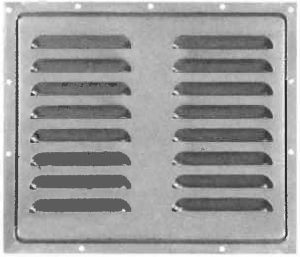
Vehicles often require ventilation. Most vehicles, for instance, generate heat. Rather than allowing the heat to accumulate within the vehicle’s engine bay, it must be dissipated.
Vents offer a simple and effective ventilation solution for vehicles. You can install a vent on the hood, thus creating an exit point for the hot air. The hot air will escape the engine bay by traveling through the vent. Whether you’re looking to buy a vent for a tractor, truck body, bus, trailer or any other vehicle, though, you should choose the right type.
Steel Construction
You can’t go wrong with a steel vent. Steel vents are strong, durable, weather resistant and long-lasting.
Many vents are made of galvanized steel. Galvanized steel is distinguished from plain steel by the presence of a protective outer layer of zinc. Plain steel is dipped in a bath of zinc, thus creating an extra layer of protection. Other vents are made of non-galvanized stainless steel. Stainless steel features chromium to protect against oxidation and rust. And you can find vents made of aluminum. Aluminum vents are lightweight, inexpensive and offer excellent protection against corrosion.
Welded
You may want to choose an all-welded vent. As the name suggests, all-welded vents are made entirely of welded parts. They don’t contain any fasteners. All-welded vents may feature multiple parts, but their respective parts are welded together.
Rattling isn’t a concern with all-welded vents. Rattling is typically the result of loose fasteners. Over time, fasteners like screws and bolts can become loose. As the vehicle moves, these loose fasteners will vibrate and rattle. All-welded vents don’t have any fasteners, so you don’t have to worry about them rattling.
Powered vs Non-Powered
There are powered and non-powered vents available. Most vents fall under the latter category. Non-powered vents consist of a metal grille that can be mounted to the top or side of a vehicle. Air can flow into and out of non-powered vents.
Powered vents, conversely, feature an electrically powered fan. When turned on, the fan will push air out of the vent.
Size
Pay attention to the size when choosing a vent for a vehicle. Most vents are square- or rectangular-shaped, but they are available in different sizes.
You should choose a vent in a size that matches the area of the vehicle where you intend to install it. Measure the length and width of the installation area, after which you can choose a vent in an appropriate size.
